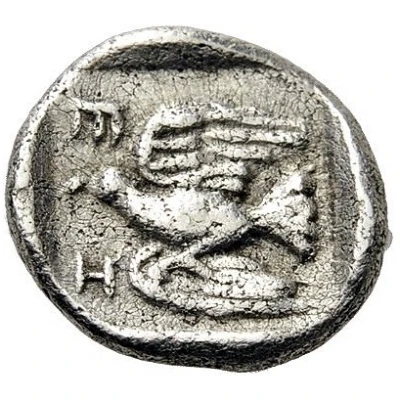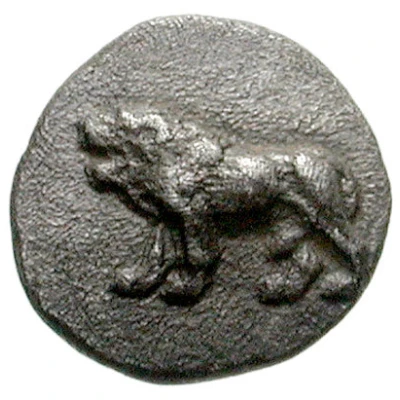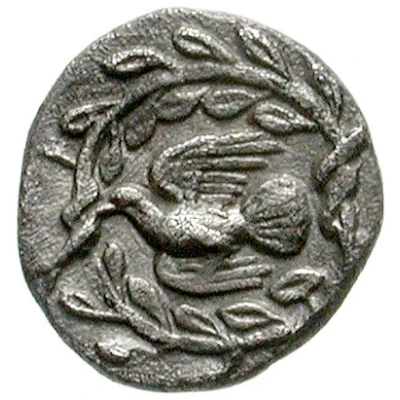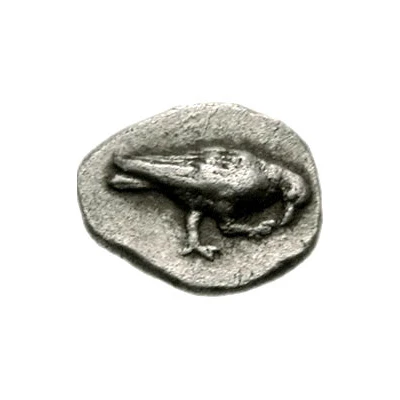
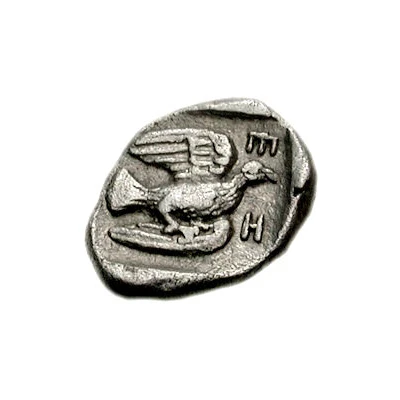

© Classical Numismatic Group, Inc.
Hemiobol 450 BC - 425 BC
| Silver | 0.43 g | - |
| Issuer | Sikyon (Sikyonia) |
|---|---|
| Type | Standard circulation coin |
| Years | 450 BC - 425 BC |
| Value | Hemiobol (1⁄12) |
| Currency | Drachm |
| Composition | Silver |
| Weight | 0.43 g |
| Shape | Round (irregular) |
| Technique | Hammered, Incuse |
| Demonetized | Yes |
| Updated | 2024-10-10 |
| Numista | N#149527 |
|---|---|
| Rarity index | 100% |
Reverse
Dove flying right, letter E to upper right, H to lower right and all within incuse square
Script: Greek
Interesting fact
The Hemiobol coin from Sikyon was used as a form of currency in ancient Greece during the 5th century BC. Its name "Hemiobol" comes from the Greek words "hēmi-" meaning "half" and "bolos" meaning "throw", which refers to the coin's value being equal to half the value of a full "bolos" coin. This coin was made of silver and weighed 0.43 grams, making it a valuable and widely used form of currency during its time.

